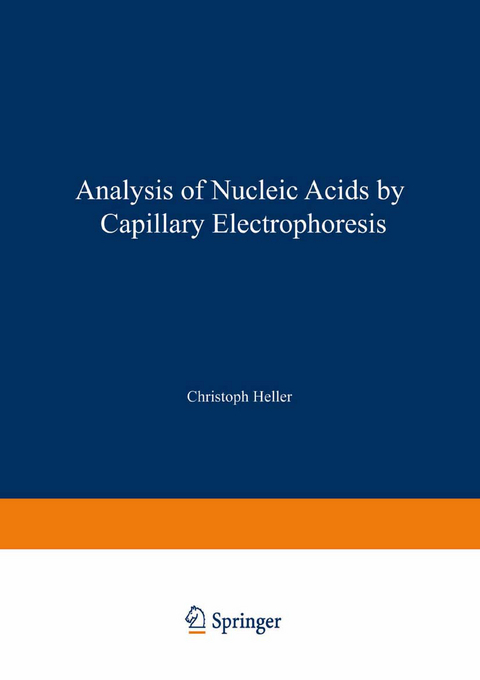
Analysis of Nucleic Acids by Capillary Electrophoresis
Vieweg & Teubner (Verlag)
978-3-322-91017-2 (ISBN)
Dr. Christoph Heller ist Wissenschaftler am Max-Planck-Institut für molekulare Genetik in Berlin. The editor, Dr. Christoph Heller, is currently working at the Max-Planck-Institute for Molecular Genetics in Berlin-Dahlem, Germany. Since 1985 he is working in the field of DNA separation, both in conventional gels and - since five years - also in capillaries.
I Basic Concepts.- 1 The Separation Matrix.- 2 Electrophoresis Theories.- 3 Microscopic Studies on the Migration Mechanism.- II Factors Affecting the Separation.- 4 Influence of Polymer Concentration and Electric Field.- 5 Effects of Sample Matrix and Injection.- 6 Developments in Capillary Coating and DNA Separation Matrices.- III Applications.- 7 Analysis of Oligonucleotides and Antisense DNA Analogs.- 8 Separation of DNA Restriction Fragments and PCR Products.- 9 Pulsed-Field Capillary Electrophoresis of Large DNA.- 10 Capillary Electrophoresis for DNA Sequencing.- 11 Mutational Analysis with Capillary Electrophoresis.- 12 Analysis of Transfer RNA and 5S Ribosomal RNA.- IV Recent Developments.- 13 Update on Improvements in DNA Separation.
| Erscheint lt. Verlag | 6.1.2013 |
|---|---|
| Reihe/Serie | CHROMATOGRAPHIA CE-Series |
| Mitarbeit |
Herausgeber (Serie): Kevin D. Altria |
| Zusatzinfo | X, 314 p. |
| Verlagsort | Wiesbaden |
| Sprache | englisch |
| Maße | 148 x 210 mm |
| Gewicht | 430 g |
| Themenwelt | Technik |
| Schlagworte | Chemistry • Development • Elektrophorese • Technology |
| ISBN-10 | 3-322-91017-2 / 3322910172 |
| ISBN-13 | 978-3-322-91017-2 / 9783322910172 |
| Zustand | Neuware |
| Haben Sie eine Frage zum Produkt? |
aus dem Bereich


